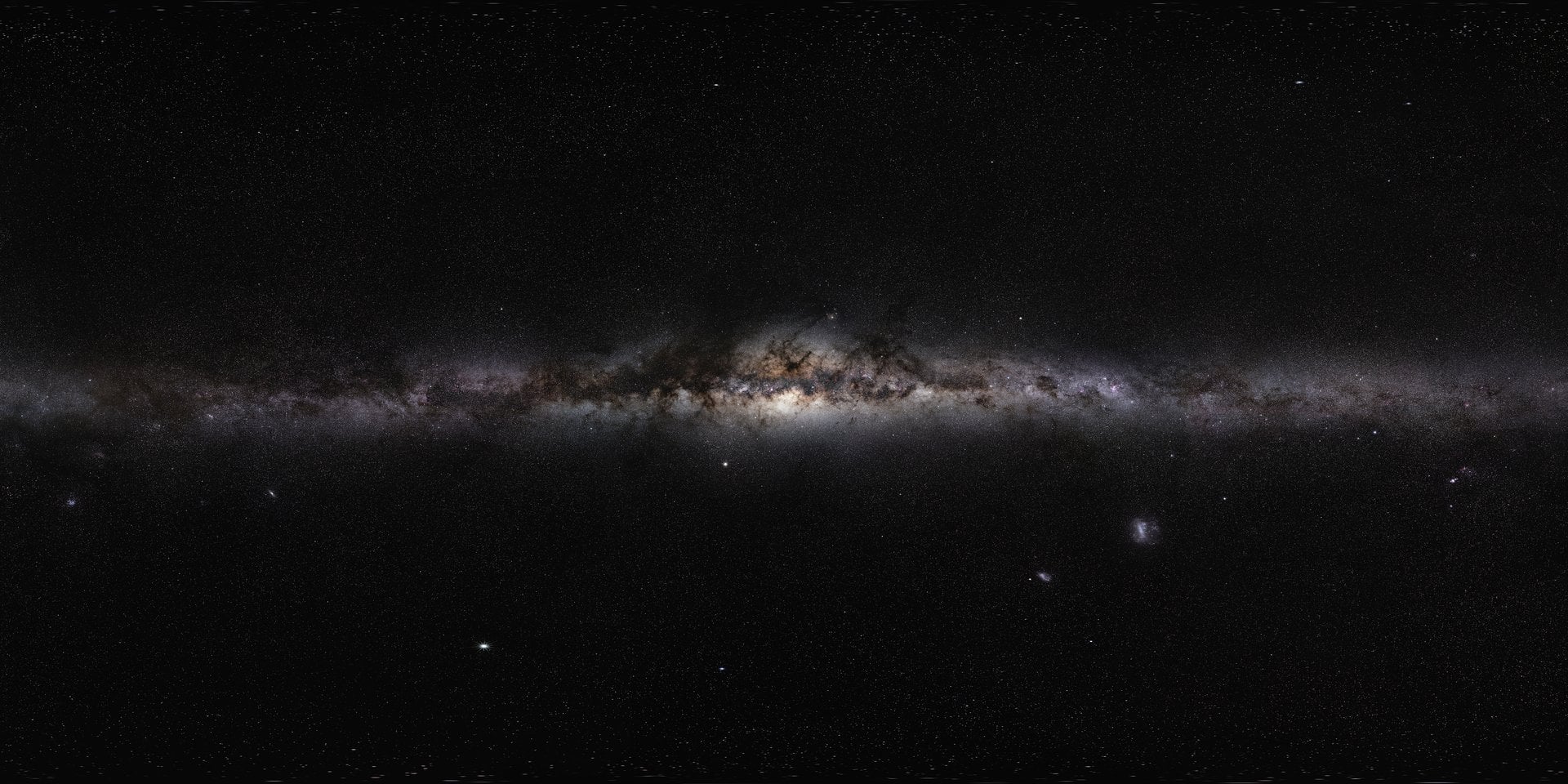Science
Researchers Unveil Advanced Simulation of the Milky Way Galaxy

Researchers at the RIKEN Center for Interdisciplinary Theoretical and Mathematical Sciences (iTHEMS) in Japan have achieved a groundbreaking milestone by creating the world’s first comprehensive simulation of the Milky Way galaxy. Collaborating with teams from the University of Tokyo and the Universitat de Barcelona, the scientists successfully modeled over 100 billion stars across a timespan of 10,000 years. This unprecedented simulation not only represents a significant increase in the number of stars—by a factor of 100 compared to previous models—but also operates at a speed 100 times faster.
The team utilized an impressive array of technological resources, integrating 7 million CPU cores, advanced machine learning algorithms, and sophisticated numerical simulations. The results of their research were detailed in a paper titled “The First Star-by-star N-body/Hydrodynamics Simulation of Our Galaxy Coupling with a Surrogate Model,” which was published in the *Proceedings of the International Conference for High Performance Computing, Networking, Storage and Analysis* (SC ’25).
Advancements in Galactic Simulations
Simulating the Milky Way with such granular detail allows astronomers to test and refine theories regarding galactic formation, structure, and evolution. Traditionally, astronomers have faced significant challenges in capturing the complex forces at play, including gravity, fluid dynamics, and the influence of supermassive black holes (SMBHs). The current limitations in computing power have restricted models to simulating only up to one billion solar masses, which accounts for less than 1% of the Milky Way’s stellar population.
Previously, state-of-the-art supercomputers required approximately 315 hours—over 13 days—to simulate just 1 million years of galactic evolution. Given that the Milky Way is around 13.61 billion years old, this made comprehensive simulations an unfeasible task. The inefficiencies of simply adding more computing cores further compounded the problem, as energy consumption soared and performance diminished.
To overcome these obstacles, the research team implemented a novel approach by integrating a machine learning surrogate model. This model, trained on high-resolution simulations of supernovae, allows for predictions of the impacts these explosions have on surrounding gas and dust over a period of 100,000 years. By combining this AI-driven method with physical simulations, the researchers achieved a dual resolution of both large-scale galactic dynamics and small-scale stellar phenomena.
Testing and Future Implications
The team’s model was rigorously tested using the Fugaku and Miyabi Supercomputer Systems at RIKEN and the University of Tokyo. Their findings revealed that this innovative method could simulate the evolution of a galaxy containing more than 100 billion stars in just 2.78 hours for a span of 1 million years. At this remarkable rate, simulating a billion years of galactic history could be accomplished in approximately 115 days.
These advancements present astronomers with an invaluable resource for exploring theories surrounding galactic evolution and the origins of our universe. Furthermore, the integration of AI in simulations offers potential applications beyond astrophysics. The approach could prove beneficial in other fields requiring complex simulations, including meteorology, ocean dynamics, and climate science.
This significant leap in computational astrophysics not only enhances our understanding of the Milky Way but also sets a precedent for future research methodologies, demonstrating the power and efficiency of combining traditional physics with modern artificial intelligence.
-

 Lifestyle4 months ago
Lifestyle4 months agoLibraries Challenge Rising E-Book Costs Amid Growing Demand
-

 Sports4 months ago
Sports4 months agoTyreek Hill Responds to Tua Tagovailoa’s Comments on Team Dynamics
-

 Sports4 months ago
Sports4 months agoLiverpool Secures Agreement to Sign Young Striker Will Wright
-

 Lifestyle4 months ago
Lifestyle4 months agoSave Your Split Tomatoes: Expert Tips for Gardeners
-

 Lifestyle4 months ago
Lifestyle4 months agoPrincess Beatrice’s Daughter Athena Joins Siblings at London Parade
-

 World4 months ago
World4 months agoWinter Storms Lash New South Wales with Snow, Flood Risks
-

 Science3 months ago
Science3 months agoSan Francisco Hosts Unique Contest to Identify “Performative Males”
-

 Science4 months ago
Science4 months agoTrump Administration Moves to Repeal Key Climate Regulation
-

 Business4 months ago
Business4 months agoSoFi Technologies Shares Slip 2% Following Insider Stock Sale
-

 Science4 months ago
Science4 months agoNew Tool Reveals Link Between Horse Coat Condition and Parasites
-

 Sports4 months ago
Sports4 months agoElon Musk Sculpture Travels From Utah to Yosemite National Park
-

 Science4 months ago
Science4 months agoNew Study Confirms Humans Transported Stonehenge Bluestones









